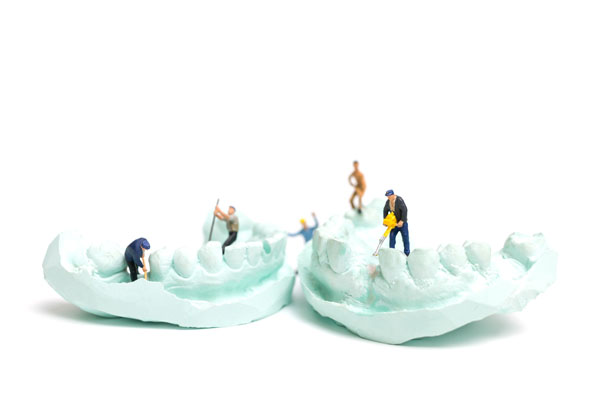 Denture rebasing is a rather complex process. This review provides a detailed yet simple overview of the denture rebasing process, which involves removing the existing acrylic base for your dentures and replacing it with a new and improved acrylic base that is much stronger and more reliable.
Denture rebasing is a rather complex process. This review provides a detailed yet simple overview of the denture rebasing process, which involves removing the existing acrylic base for your dentures and replacing it with a new and improved acrylic base that is much stronger and more reliable.
The dental rebasing process: a step-by-step guide
The denture rebasing process involves making an impression to form the denture cast, removing the existing acrylic base and preserving the existing teeth, and then creating the new acrylic base before finally reattaching it to the dentures to complete the process.
The dentist makes an impression for the denture cast
One of the first steps in the denture rebasing process is to get an impression to form a denture. This is done because the acrylic base is being removed from the denture teeth, and the teeth are being preserved while the acrylic base is being replaced (more on this below). The denture cast, along with the occlusal and incisal index of the teeth, helps preserve them during the denture rebasing process.
The acrylic base material surrounding the teeth is removed
The next step in the process is to remove the acrylic base that is currently on your dentures; this is the primary purpose of denture rebasing. This may be done to address:
- A weakened base
- A damaged base
- A base that is stained
- An outdated or undesirable base
This is also the step in which the teeth are removed from the acrylic base and placed in the index for preservation; the teeth are reattached to the new acrylic base after the rebasing process is complete.
The new acrylic base is created and the replacement teeth are attached
The last two steps are to create the acrylic base and attach the denture teeth. Although it is easy for dental professionals to ensure optimal results, this is somewhat of a complex process that can take some time to complete. It is important to remain patient as it can take several weeks for the improved dentures to arrive back at the dentist’s office.
Signs that indicate a need for denture rebasing
The primary purpose of denture rebasing is to address issues with the acrylic base. Over time, the base of dentures can begin to weaken. This can lead to an improper fit, swollen or painful gums, dentures that constantly come loose, and a less than desirable appearance. If any of these concerns exist and are related to an issue with the acrylic base of your dentures, then denture rebasing may be right for you.
Find out if denture rebasing is right for you during a consultation visit
Denture rebasing allows you to get a new acrylic base for your dentures. If you are having any issues with your dentures, such as a weakened or damaged acrylic base, then we encourage you to give us a call and schedule a consultation visit. During your visit, we can help you determine if denture rebasing is the right treatment solution to restore the condition of your dentures.
Request an appointment or call Visalia Care Dental at 559-975-1213 for an appointment in our Visalia office.
Related Posts
Denture adjustments and repairs can fix all kinds of wear and tear on your artificial teeth. They are a necessary and inevitable part of life when you have dentures.The maintenance of dentures will require one or more adjustments to keep the prosthetics in good shape. A dentist may oversee the repair of a crack or…
Denture adjustments ensure that life with dentures lines up with what you sign up for. A set of dentures is not a true replacement for natural teeth, but it should come close. This is where routine maintenance of your prosthetic teeth comes in.Wearing your dentures should be an easy task that only takes a few…
Monitoring and denture adjustments allow your dentures to remain useful and comfortable throughout their lifespan. These proactive measures enable your prosthetic teeth to mimic the function of natural teeth without the discomfort of slippage and injury. Here is how denture adjustments can solve common problems that come up when you live with dentures.Dental prosthetics like…
